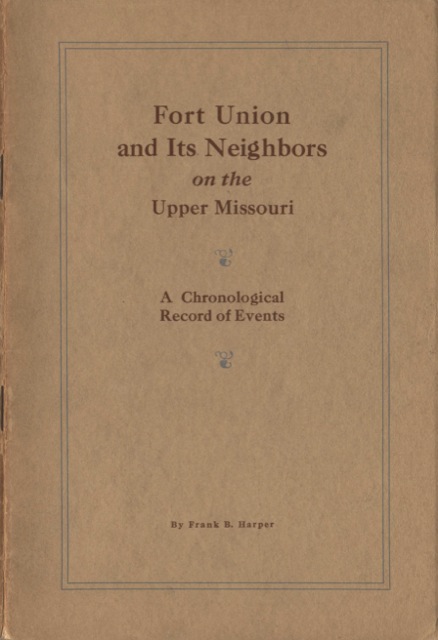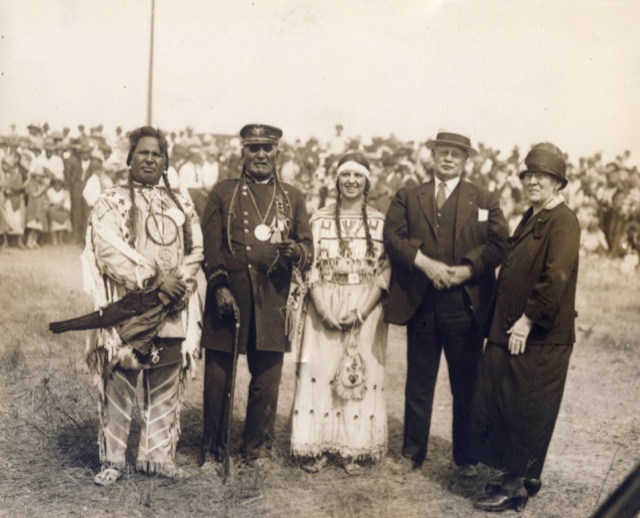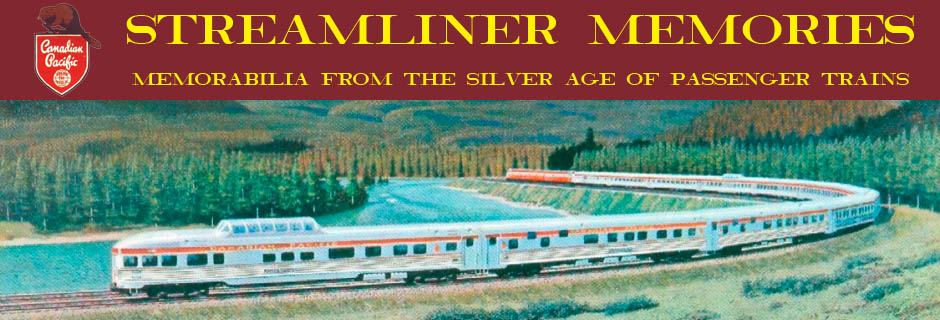The Upper Missouri Expedition spent July 18 at the site of Fort Union, which had been the chief trading post for Astor’s American Fur Company from about 1828 to 1867. Located just east of the North Dakota-Montana border, the fort had been dismantled after it was abandoned in order to construct other buildings, while a town called Mondak (Montana-Dakota) sprang up just west of the state line. Both Mondak and the Fort Union site were within view of the Great Northern line.

The Great Northern commissioned this paper by Frank Harper, about whom I can find little information. Click image to download an 11.7-MB PDF of this booklet.
Mondak was already in decline by 1925, but the Great Northern persuaded the Post Office to rename it Fort Union. Ralph Budd toyed with the idea of rebuilding all or part of the original fort, but decided the cost ($21,000–$275,000 in today’s money–for all of it or $4,000–$52,000 in today’s money–for part of it) was too great. Eventually, the National Park Service bought the land and has reconstructed much of the fort.
Instead of a fort, Great Northern placed a flagpole near the location of the original fort’s flagpole. The day’s events began with a symbolic raising and lowering of French, then British flags, followed by a raising of the American flag, representing the region’s history. While the land had never been under British ownership, Hudson’s Bay Company had a brief presence there for a time in the 1830s.
To entertain passengers, the railway arranged for an Indian congress involving 400 members of eleven different tribes: Mandan, Hidatsa, Arikara, Chippea, Sioux, Assiniboines, Gros Ventres, Crow, Blackfeet, Blood, and Piegen. This was the first gathering of different tribes of plains Indians since they had all been herded onto reservations in the late nineteenth century.
Over the objections of some Christian Indian agents, who fretted that such a meeting would encourage Indians to return to their pagan ways, the railway spent $3,000 (about $40,000 in today’s money) bringing in and feeding the Indians and providing horses, materials for building lodges, and other goods such as Montana pipestone for making pipes. The Indians, for their part, were happy to attend, not only because the Great Northern provided free food but because it gave them a chance to engage in activities forbidden by Indian agents and to meet with friends and relatives from other reservations.
In addition to the people on the train, some 10,000 local residents drove to Fort Union in 3,000 automobiles, many of them crossing the railway’s own bridge across the Missouri on which it had constructed a plank road just for the occasion. Opened to cars for the first time on July 18, the one-way plank roadway continued to allow toll-paying automobiles, even as it carried rail traffic, until 1985.

Blackfoot chiefs Owen Heavy Breast and Mountain Chief, Princess Guiding Star (“Miss Glacier Park”), and Major-General and Mrs. Hugh Scott pose at the Fort Union Indian Congress on July 18, 1925. Click image for a larger view.
Major-General Scott, an expert in Indian sign language, gave a speech in English and sign language for the Indians. Six or seven Indian chiefs responded in kind, thanking the Great Northern but also imploring the audience to persuade the federal government to treat the Indians fairly and abide by treaties–requests that largely fell on deaf ears.
The head of the Bureau of Indian Affairs and the chair of the House Committee on Indian Relations also spoke. Three members of the expedition, Supreme Court Justice Pierce Butler, writer Lawrence Abbott, and St. Paul artist Elsa Jemne, were inducted into various Indian tribes “with elaborate and colorful ceremonies.” The Indians spent much of the day entertaining the crowds with a variety of dances, races, and competitions for such things as “best old time costume,” “best tribal dance,” and “best Indian lodge.”
Sadly, Americans at the time still regarded the Indians as inferior beings; Noble Savages whose lack of the technology and social institutions that allowed Europeans to take over the Western Hemisphere proved they were destined to be shunted aside. As historian Agnes Laut later wrote in her log of the Upper Missouri Expedition (referring to Chief Joseph in particular but applicable to Indians in general), “it was as inevitable that he must be defeated as it was right that he should be.”
